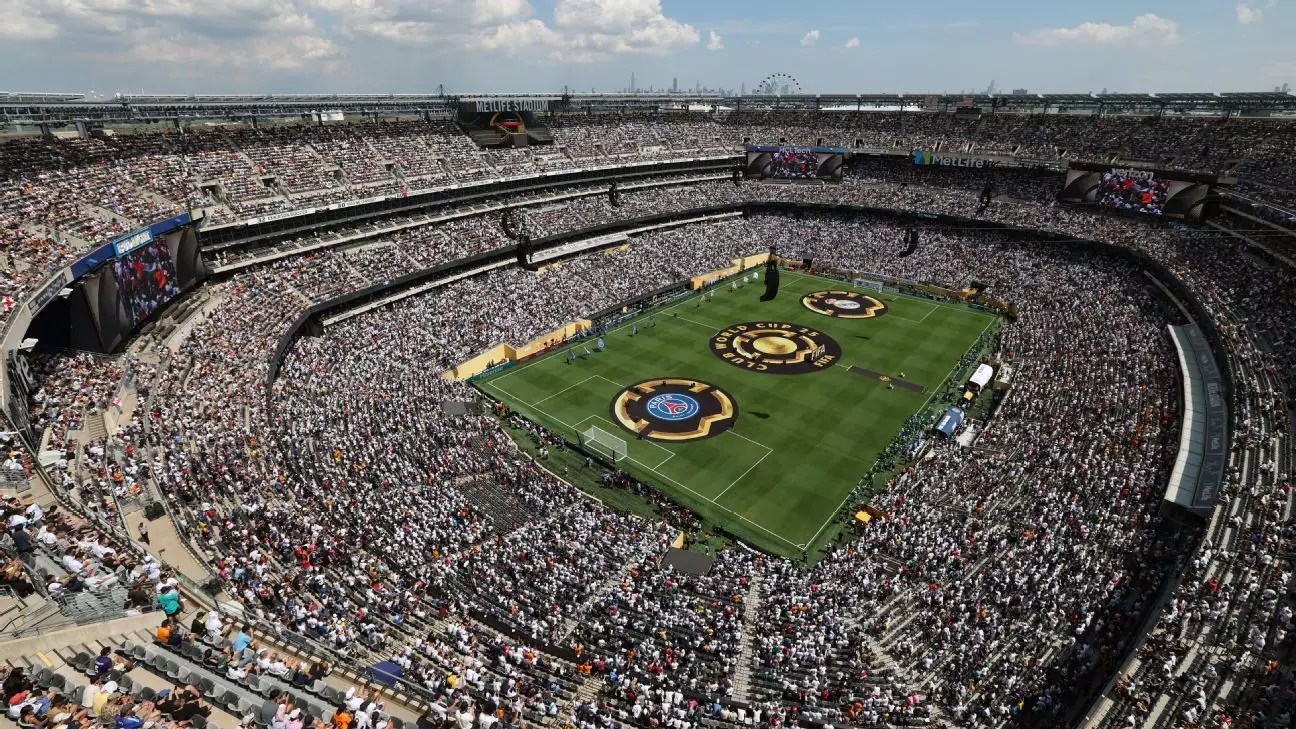The recent conclusion of the Club World Cup signals more than just the end of a football tournament; it marks the dawn of North America as a serious contender on the global soccer stage. For decades, the region coasted on the peripheral fringes of international football supremacy, often dismissed as a market of potential rather than achievement. However, the resounding success of this inaugural expanded event challenges that narrative, transforming skepticism into recognition. Over three million spectators converged across cities—an unprecedented tally that underscores a burgeoning passion and a craving for high-stakes competition. This surge of enthusiasm exemplifies how North American fans have stepped into the global spotlight, proving they possess the knowledge, energy, and culture to elevate the sport’s reputation within the continent.
What makes these achievements profound isn’t solely the numbers; it’s the palpable shift in perception. This tournament was more than a collection of matches—it was a statement. The region’s capacity to host a complex, international event involving dozens of games, some played in unfamiliar stadiums adapted hastily for such grandeur, was nothing short of extraordinary. The resilience of organizers, stadium authorities, and fans alike demonstrated an unwavering commitment to growth, setting a template for future global events in the region.
Transformative Impact on Infrastructure and Perception
The Club World Cup’s success unveiled critical infrastructure lessons that will influence North America’s hosting of next year’s FIFA World Cup. Stadiums that previously served local leagues underwent swift, innovative transformations, showcasing infrastructure agility and technological readiness. These venues, which had rarely hosted high-profile international matches until recently, have now proved their capability. This is a testament to the region’s evolving capacity to deliver world-class spectacles, preparing the groundwork for a tournament that promises to be history-making.
Moreover, the tournament validated North America’s ability to deliver beyond expectations, contrary to some lingering doubts about logistical capability and environmental challenges such as extreme weather conditions. Weather, stadium adaptation, and new ticketing procedures tested the system severely. Yet, the overall execution was smooth enough to make skeptics reconsider. It is clear that this is a cumulative effort rooted in ambitious planning, innovation, and an insatiable desire to demonstrate global competitiveness. The event broke down barriers—both physical and perceptual—showing that North American soccer is no longer an emerging entity but an established power with a compelling story to tell.
Emerging Clubs and a Growing Sporting Identity
One of the most inspiring narratives of this tournament is the performance of North American clubs on the international stage. Inter Miami’s historic victory over Porto, a European giant, sent shockwaves through the football community. It challenged the notion that European clubs are invincible and posited MLS teams as viable competitors, capable of holding their own against traditional powerhouses. Such moments are more than fleeting triumphs—they are catalysts for a cultural shift within the sport’s ecosystem in the United States, Canada, and Mexico.
Garber’s acknowledgment of the strength demonstrated by leagues beyond Europe, particularly in Brazil and the U.S., highlights a broader movement—one of regional self-confidence and increasing competitiveness. The rising quality of players, coaching, and club management is creating an environment primed for further progress. These developments foster a sense of national pride, fueling domestic ambitions to produce players who can excel internationally, while attracting global investment and top-tier talent.
The Challenges and Opportunities Ahead
Despite the triumphs, the tournament was not without its hurdles. Rapid stadium conversions meant logistical hurdles; unfamiliarity with hosting these events created an initial uncertainty. Hot weather tested the endurance of players and fans, sometimes dampening spirits but never stopping the show. These setbacks, rather than undermining confidence, serve as valuable lessons—proof that growth is often imperfect but essential.
Looking forward, the key to sustaining this momentum lies in embracing innovation and learning from current challenges. The successful execution of this tournament signals that North America is ready to take on the global sporting arena with confidence. The real opportunity now is to leverage this event as a springboard—building upon lessons learned, improving infrastructure, and nurturing local talent. It’s about transforming temporary moments of glory into lasting legacies that define the continent’s place in world football.
This moment is undeniably pivotal. It challenges old stereotypes and rewrites North America’s role in international soccer. The region is fueling a passionate, diverse, and resilient football culture that, if nurtured correctly, has the potential to shape the future of the sport on a global scale.


Leave a Reply